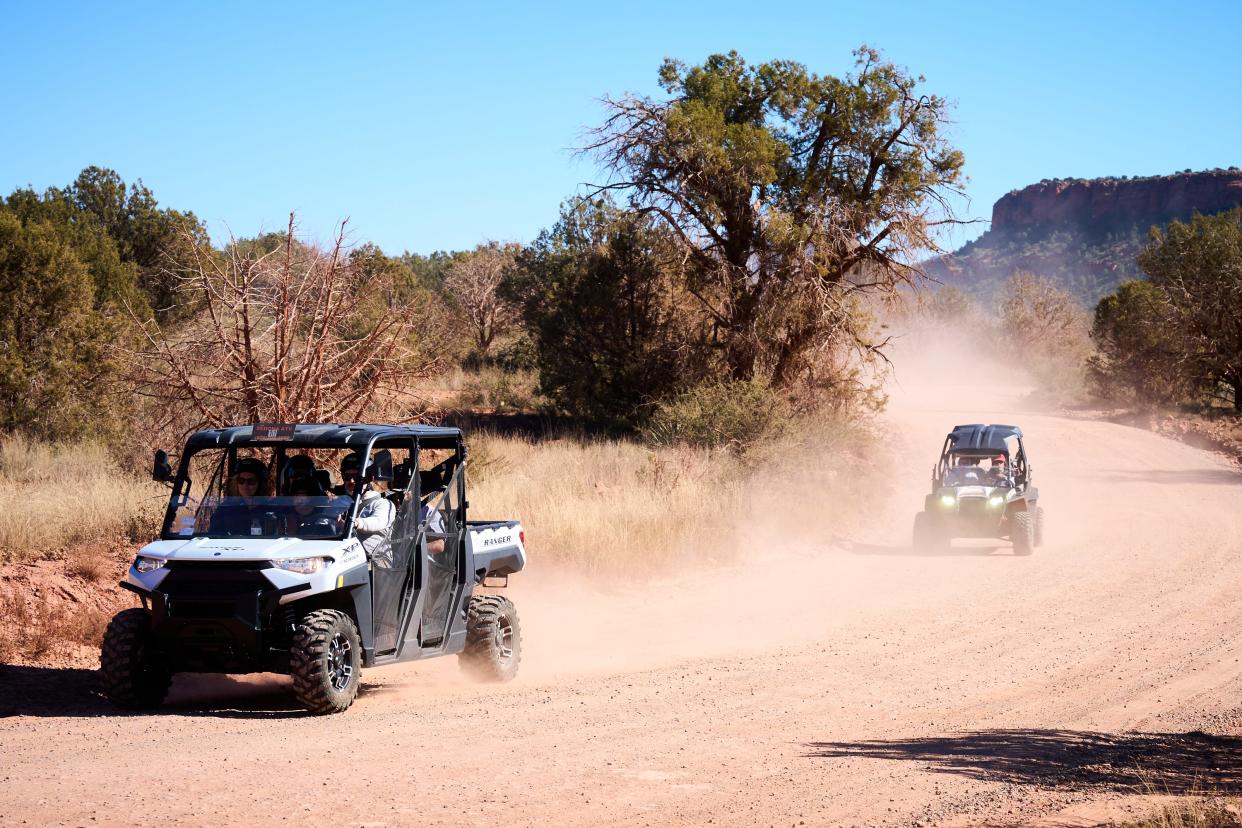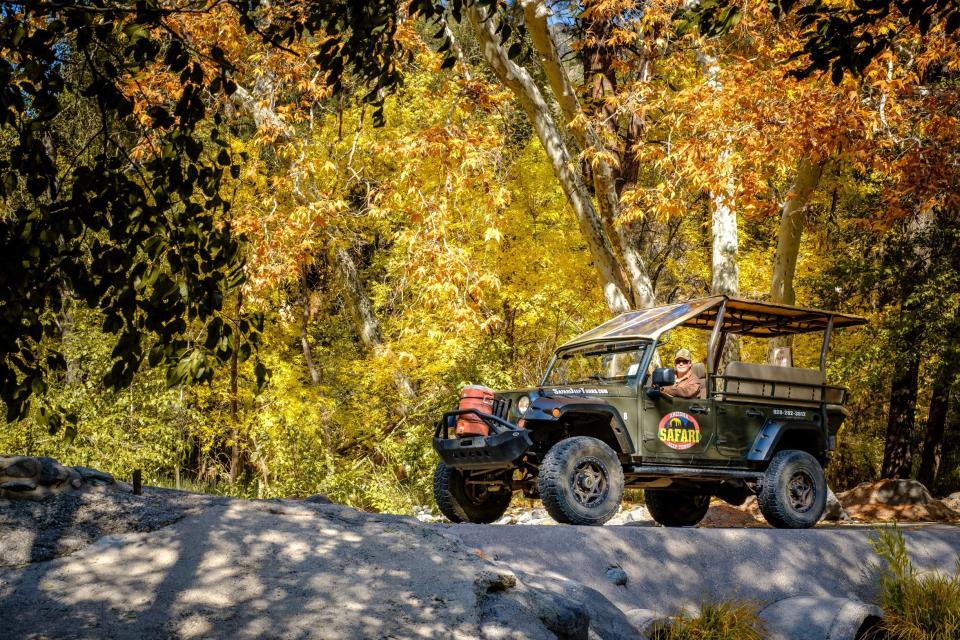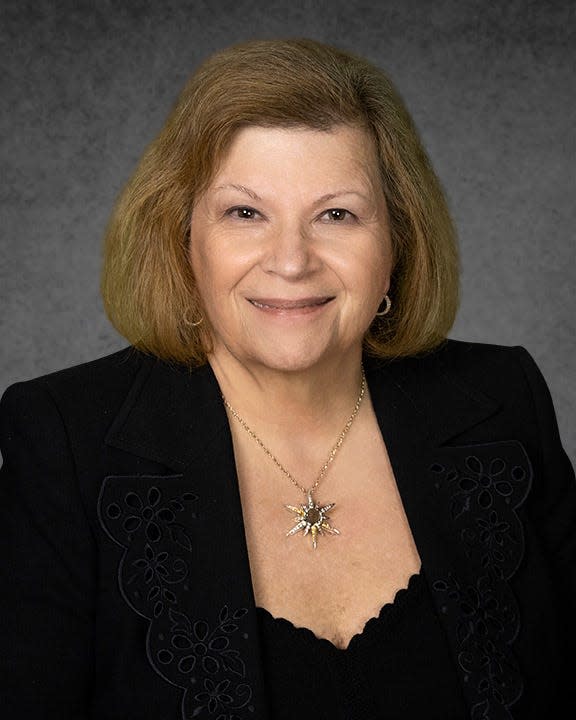Sedona considers restricting off-road vehicle access on city streets, highways

SEDONA — The familiar sight of off-highway vehicles traveling through the streets of Sedona could soon be a thing of the past thanks to an ordinance proposed by city council.
The ordinance would require all motor vehicles driving on paved public roadways to comply with certain vehicle safety standards, which the city argues nearly all OHVs do not meet.
If passed, the ordinance would make it illegal to drive a motor vehicle that is unsafe, does not include proper safety equipment or that is not approved by the manufacturer to be operated on paved or public roads within the city of Sedona.
Notably, as it is written now, there is currently an exemption for city employees under the ordinance, intended to allow the fire department to continue using their fleet of UTVs on calls for service across town.
The backbone of the ordinance relies on the fact that OHV manufacturers themselves explicitly state in their owners manuals that the vehicles are not designed for travel on paved roads of any kind.
Further, the tires that equip these vehicles do not meet Department of Transportation requirements for travel on streets and highways.
Additional safety concerns were raised by city leaders as OHVs often lack other safety equipment designed to keep drivers of traditional vehicles safe including airbags, anti-lock brakes, crumple zones, stability control, bumpers and turn signals.
“What is a fact is that there are six manufacturers that all say these vehicles do not belong on paved roads and that’s an indisputable fact,” Councilor Brian Fultz said.
“Now that I know that, I can’t un-know that,” he said.
Fultz also made a point to emphasize twice that Polaris, one of the most popular manufacturers of OHVs, does not oppose the basis for this ordinance. Instead, they are just concerned about the continued economic viability of the local industry, a sentiment shared by many of the speakers and a majority of those on council.
Futlz said it was the city council’s responsibility to take preemptive action to protect drivers who may or may not be aware of the inherent dangers of these vehicles.
“I do believe that when a manufacturer says it's not safe to do something, there’s a Darwinian principle involved when you do it anyway,” echoed Councilor Melissa Dunn.
Mayor Scott Jablow said that while he understood the concerns from the community, safety should remain the priority. Moreover, he said just because there hasn’t been a deadly OHV accident in Sedona yet doesn’t mean they should wait until there is one to act.
"All we're doing is keeping people safe," Jablow said. "And it could be you, it could your wife, your spouse, your child, you don't know."
When presenting the ordinance, the city referred to the U.S. Consumer and Product Safety Commission that reports an average of more than 700 deaths per year involving OHVs. According to the Commission's most recent annual report, there were 2,178 deaths associated with OHVs from 2017 to 2019, the most recent year with complete data.
Councilors, residents concerned about unintended consequences
Much of the night’s conversations revolved around limiting the potential unintended consequences if this ordinance were to go into effect. Speakers both in support of and opposed to the ordinance expressed various concerns that could potentially arise as a result of this legislation.
If OHVs are prohibited from paved roadways, they would need to be taken to trailheads on large trailers, which many people pointed out could end up being more disruptive than the already-crowded parking situation that currently exists in many popular areas.
Additionally, countless speakers connected to the OHV industry expressed worries that the restrictions will have a significant negative impact economically on local rental businesses and their employees.
More on the red rocks: Best Sedona restaurants in 2023 have views and food to savor. Here's what to order
City leaders shared some of these concerns and reaffirmed their commitment to support the industry through a potential transition.
“I don’t believe a city council should be in the business of putting businesses out of business,” Fultz said.
Multiple councilors expressed their general support for the ordinance but there needs to be more research into the potential impacts before they can vote.
“We have two things to do: keep you in business, and I mean that, but keep our residents and the traveling public safe as well," Jablow said.

Other popular off-road destinations have passed similar restrictions
Sedona is not the first tourism destination that has had to tackle the issue of OHVs on public roadways.
Just this March, trade groups sponsored by OHV manufacturers sent a letter to the Oregon legislature opposing a proposed bill that would have made OHVs and ATVs street legal in the state, stating they are not safe for highway use.
Nearby in New Mexico, it is illegal to operate an OHV on paved roads or highways except as allowed by local authority or the state transportation commission.
Meanwhile, Montana requires any OHVs to be modified to be street legal before they can drive on public paved roadways, which could include adding a functioning headlamp, stop lamp, brakes, electric horn, rearview mirror, exhaust muffler and spark arrestor.
These states, councilors pointed out, have still been able to maintain successful off-road industries.
“It’s about changing a business model,” Vice Mayor Holli Ploog said.

Conservative think tank questions ordinance legality
The day before the meeting, Adam Shelton, a lawyer with The Goldwater Institute, wrote a letter to the city questioning the legality of the ordinance under state law.
Many residents who spoke against the proposal specifically referenced the letter and the potential for legal action if the ordinance is eventually passed.
“We believe that the proposed ordinance is likely preempted by state law, which allows OHVs to be legally driven on streets and highways so long as they are outfitted with equipment prescribed by state statute,” Shelton wrote.
This does not clearly conflict with the Sedona ordinance as written, which essentially just requires all vehicles on public roadways to be approved for highway use — which appears to also be the intention of the state law.
More on tourism: Sedona takes charge of tourism promotion after split with chamber of commerce
During the meeting, Sedona City Attorney Kurt Christianson presented multiple statutes under Arizona law that he said gives local municipalities the authority to institute restrictions of this kind.
“We are not in the business of passing illegal ordinances,” Ploog added.
The Goldwater Institute is a conservative and libertarian public policy think tank located in Phoenix whose stated mission is "to defend and strengthen the freedom guaranteed to all Americans in the constitutions of the United States and all fifty states."
Referencing the claims outlined in the letter, councilor Pete Furman pointed out that the group hasn't always been the best judge of what's best for Sedona.
"I might remind all of us that the Goldwater Institute and the Arizona state legislature didn't think short-term rentals would be harmful in any way either," Furman said.
Sedona has been trying to solve OHV problems for years
The city has been trying to mitigate the impacts of the OHV industry for nearly a decade with very little tangible solutions to show for it. Residents have long complained about the dust and noise created by these vehicles, which have skyrocketed in popularity over the past decade.
Many of those who spoke against the ordinance alleged that this was a roundabout way for the city to ban OHVs altogether, which the City Council pushed back on.
While the city considers this ordinance, there is still a separate and extensive effort underway to develop solutions with various stakeholders around the issue.
The Greater Sedona Recreation Collaborative started working last year as a collection of community representatives that reflect the wide array of perspectives on this topic. But councilors expressed frustration with the group’s timeline and their focus on solutions that have already been around for years, like reducing OHV volume or modifying mufflers to reduce noise.
"At some point in time we have to say, 'Do something' and I'm not seeing anything new being done," Jablow said.
Group facilitator Jessica Archibald acknowledged that while a multi-year timeline might not be ideal, ensuring the success of this project requires the building of trust between all opposing sides — something that simply cannot happen overnight.
“This is an incredibly complicated issue,” Archibald said. “There’s a reason this has taken nine years.”
Reach the reporter at LLatch@gannett.com.
The Republic’s coverage of northern Arizona is funded, in part, with grants from Vitalyst Health Foundation and Report from America. To support regional Arizona news coverage like this, make a tax-deductible donation at supportjournalism.azcentral.com.
This article originally appeared on Arizona Republic: Sedona leaders weigh new OHV restrictions within the city

